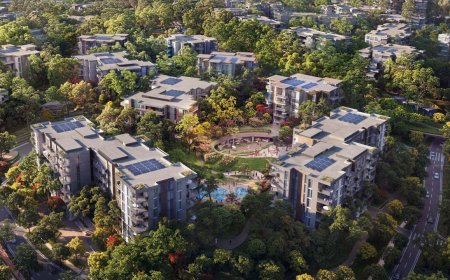How the TDSR and MSR Affect Your Home Loan in Singapore
Understand how Total Debt Servicing Ratio (TDSR) and Mortgage Servicing Ratio (MSR) impact your loan eligibility and borrowing power in Singapore.

When buying property in Singapore, whether private or HDB, financing is a key concern. However, not all buyers can borrow freelygovernment measures are in place to ensure responsible borrowing and long-term financial stability. Two of the most important rules are the Total Debt Servicing Ratio (TDSR) and Mortgage Servicing Ratio (MSR). If you're new to property financing, understanding these terms can make or break your home-buying journey.
This article will walk you through what TDSR and MSR are, how they're calculated, and how they directly affect your loan eligibility in Singapore.
What is TDSR?
TDSR, or Total Debt Servicing Ratio, limits how much of your monthly income can be used to pay for all your monthly debt obligations, including your home loan.
The TDSR Cap:
-
Currently set at 55% of your gross monthly income.
-
Applies to all property typesHDB flats, Executive Condominiums, and private properties.
-
Includes all debts: home loans, car loans, personal loans, student loans, and credit card balances.
Formula:
What is MSR?
MSR, or Mortgage Servicing Ratio, is more specific. It limits the proportion of your income that can go toward servicing just your home loan, not all debt.
The MSR Cap:
-
Capped at 30% of your gross monthly income.
-
Applies only to HDB flats and Executive Condominiums purchased directly from the developer.
-
Does not apply to private property buyers.
Formula:
Key Differences Between TDSR and MSR
| Aspect | TDSR | MSR |
|---|---|---|
| Applies to | All properties | Only HDB and ECs |
| Scope | All debts | Only housing loan |
| Cap | 55% | 30% |
| Purpose | Ensure total debt is manageable | Promote affordability for public housing |
How Do They Impact Your Home Loan?
Lets look at a real-world example to see how these ratios impact your loan eligibility.
Example:
-
Gross monthly income: $6,000
-
Existing car loan: $800/month
-
Credit card debt: $200/month
Step 1: Calculate TDSR
Max monthly debt allowed = 55% $6,000 = $3,300
Total existing monthly debt = $800 + $200 = $1,000
Remaining for home loan = $3,300 - $1,000 = $2,300
If your monthly home loan repayment exceeds $2,300, you will not qualify.
Step 2: Calculate MSR (if buying HDB/EC)
Max monthly housing loan = 30% $6,000 = $1,800
So, even if TDSR allows $2,300, MSR limits you to $1,800 for HDB or EC.
What Counts as Debt in TDSR?
Under the TDSR framework, the following monthly obligations are included:
-
Existing home loans
-
Car loans
-
Student loans
-
Personal and business loans
-
Credit card balances (based on 3% of the limit)
-
Renovation loans
-
Any guarantor obligations (if you co-signed for someone)
How Does Loan Tenure Affect These Ratios?
Longer loan tenures reduce your monthly instalments, helping you stay within TDSR and MSR limits.
-
Shorter tenure = higher monthly payment = harder to meet TDSR/MSR.
-
Longer tenure (up to 30 years) = lower monthly payments = easier approval.
However, take note:
-
Maximum tenure for HDB loans: 25 years
-
Maximum tenure for private property loans: 30 years
Impact of Joint Applications
If you're applying for a loan with a spouse or family member:
-
Both incomes are combined for TDSR/MSR calculations.
-
This often boosts borrowing power and helps qualify for larger loans.
However, any existing debt held by co-applicants is also included.
Can You Improve Your TDSR/MSR?
Yes, by doing the following:
1. Reduce Other Debts
Pay off or reduce car loans, credit cards, or personal loans.
2. Increase Your Income
Higher gross income raises the ceiling for both TDSR and MSR.
3. Choose Longer Loan Tenure
Spreading your repayments over more years reduces the monthly amount.
4. Consider Lower-Priced Properties
Buying within your affordability range ensures you stay within loan limits.
Loan Approval Despite Exceeding TDSR?
In certain cases, banks may approve loans above the TDSR cap only if:
-
The borrower is refinancing (with no increase in loan amount)
-
The loan is under 50% LTV and the borrower owns no other property
-
Exception requests are reviewed on a case-by-case basis
Why Were TDSR and MSR Introduced?
The government introduced these ratios as part of property cooling measures to:
-
Prevent over-borrowing
-
Reduce speculative buying
-
Ensure long-term financial stability
-
Minimize mortgage default risk during economic downturns
They help individuals avoid taking on housing loans that they cannot sustainably service.
Conclusion
TDSR and MSR are more than just numbers; theyre financial guardrails to ensure you dont bite off more than you can chew. While they may seem restrictive at first, they are in place to protect your long-term financial health. Understanding how these ratios work gives you the power to plan, budget, and buy your dream home without overstretching your finances.
Important Links
Discover the Future of Upper Thomson Living at the Thomson View En Bloc Condo Showflat
Discover the Charm of Living at Thomson View Condo
Discover the Charm of Thomson View Condo Showflat
The Impact of Upcoming MRT Lines on Property Prices in Singapore
What First-Time Buyers Should Know About Condo Maintenance Fees in Singapore
Thomson View En Bloc Condo Showflat
Thomson View En Bloc Condo Showflat





















